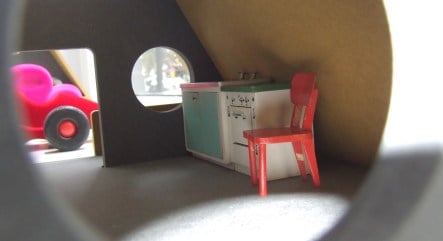Opened a mere three weeks ago, Designgalleriet is already attracting considerable media attention. And with an advisory board constituting such industry big hitters* as Cilla Robach, Lotta Ahlvar and Mark Isitt, it’s no wonder.
Founded and curated by trend analyst Stefan Nilsson and PR expert Karin Sköldberg, Designgalleriet claims to be Stockholm’s only gallery solely dedicated to design. As Sköldberg explains: “We thought this was missing, in Stockholm and Sweden, a design gallery. There are no design galleries. You do have some great exhibitions, but they are mostly directed towards business – for other designers, designer companies – and it’s a very narrow community going there to see their exhibitions”.
The aim of Designgalleriet is to make new, cutting-edge design accessible to the general public – to surprise and inspire visitors with items not usually included in design exhibitions. Sköldberg describes how she aims to create a space in which the very concepts of Swedish design can be challenged.
“There are so many good objects that are not accepted… it’s a pity. We don’t want to show the same ten industry sanctioned, accepted items”. Stockholm is a city teeming with design. However, most of this is to be found in the hundreds of home stores located in the city and the items on display are obviously selected on the basis of their commerciality. Designgalleriet radically breaks from this restriction
“We can show a story behind the products… if you are a store you have to be very commercial, they wouldn’t show pieces that wouldn’t sell… We can show the evolution of the products without being concerned with their commercial value, like prototypes for example.
“Also we are intending to show the whole design range, not only product design, because that’s what you find in the design stores. We will show graphic design, industrial design, fashion, maybe even photography if it’s design related”.
Currently on exhibition at Designgalleriet, Formex Formidable displays the best items from Scandinavia’s largest design fair, Formex Stockholm. A perfect example of Designgalleriet’s ethos at work, Formex has previously only been open to those within the design industry, but now the pieces have for the first time been made available to the public.
Sköldberg explains her favourite piece in the collection, an A-frame dolls house by Our Children’s Gorilla, a creation which challenges not only our preconceptions of what constitutes design, but even societal notions as entrenched as gender ethics.
“I have a two year old daughter, and if you go to a toy store, you have the pink department and the light blue or war department… I don’t want my daughter to grow up thinking that she has to be pretty.
“I want her to be tough and lively and outspoken and I think this dolls house is very good because it’s shaped as a triangle, it’s yellow and black, the windows are round… It doesn’t prescribe to the child how it should play with it. A traditional dolls house tells you from the beginning how it should be used, but this allows the child to be creative: you have to work out yourself how to use it”.
Designgalleriet aims to push the boundaries of Swedish design, to excite and illuminate the visitor by allowing new, undiscovered artists the opportunity to show their works and concepts.
As Sköldberg explains: “Swedish and Scandinavian design is thought of as minimalist, clean, inspired by our roots and it’s always the same… but it’s not only that, it’s that also, it’s much broader… not that there’s anything wrong with traditional design, we need that too, but it must be understood that it’s not everything. It needs to work together with the new”.
*Cilla Robach, Curator at the National Museum
Lotta Ahlvar, CEO at the Swedish Fashion Council
Mark Isitt, design and architecture critic
The Formex Formidable exhibition runs until September 13th and will be followed from September 17th – 18th by Stora Designpriset, an exhibition containing the very best of Swedish industrial design.
Getting there:
Designgalleriet,
Odengatan 21,
114 24 Stockholm.
Tel +46 823 0021
Bus – Take the number 4 to Valhallavägen/Odengatan
Metro – T14 red line to Tekniska Högskolan. Follow signs to Odenplan when exiting the station.
See also: Photo Gallery



 Please whitelist us to continue reading.
Please whitelist us to continue reading.